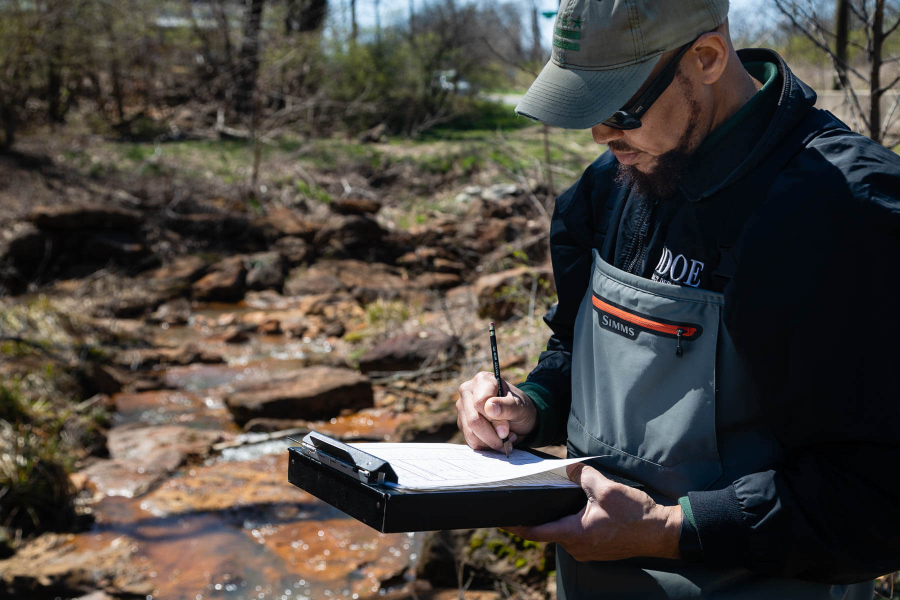The grade of the Chesapeake Bay remains a 'C'
University of Maryland Center for Environmental Science finds Bay health remains steady

On a sunny May afternoon along the Inner Harbor in Baltimore, Maryland, University of Maryland Center Environmental Science (UMCES) vice-president for science application, Bill Dennison, announced the findings of the most recent Chesapeake Bay Report Card.
“While 2018 was a difficult year for Chesapeake health due to high rainfall, we are seeing trends that the Bay is still significantly improving over time. This is encouraging because the Bay is showing resilience to climate change,” said Dennison.
Although the health of the Chesapeake Bay declined from a score of 54 percent in 2017 to 46 percent in 2018, the overall grade remains a C. The latest news regarding Bay health continues to be celebrated by experts across the watershed, as many feared the record-breaking rainfall of 2018 would have a more severe impact on restoration progress than is being seen. Like the Bay Barometer, the Chesapeake Bay Program’s annual report on the health of the watershed, the Chesapeake Bay Report Card shows that over the long-term the actions taken by our many partners to restore and protect the Bay are working.
UMCES calculates its annual Chesapeake Bay Report Card through several indicators of Bay health, of which all declined or stayed the same in 2018. Despite declines, nutrients, dissolved oxygen and underwater grasses have significantly improving trends over time. Some highlights of the report:
- Nitrogen: Scores generally were better in rural areas compared to urban, but total nitrogen decreased from 59 percent in 2017 to 44 percent in 2018.
- Phosphorus: Scores were varied across the watershed, and overall phosphorus declined from 76 percent in 2017 to 72 percent in 2018.
- Benthic Index of Biotic Integrity Scores: This measures the small animals that live in the sediment and under rocks at the bottom of streams and rivers, like snails, mussels and insects. Benthic health is good to excellent in forested areas, poor and fair around agricultural areas and poor or very poor in urban and suburban areas. The benthic community score declined one point from 60 to 50 percent.
- Fisheries: While striped bass numbers sharply declined, the overall Fisheries Index scored a 74 percent. Blue crab and bay anchovy populations also fell.
- Improving Health Trends: The James, Elizabeth, Patapsco and Back rivers, as well as the upper Bay, lower Eastern Shore and upper Western Shore all showed significantly improving trends in 2018.
Despite this encouraging news, the Bay still has a long way to go before it can be considered restored. New threats associated with climate change continue to put pressure on the entire ecosystem. The Chesapeake Bay Program released its first-ever climate indicators in the most recent Bay Barometer, reporting that the water level of the Bay has risen between one-eighth and approximately one-sixth of an inch each year since 1960. Additionally, the temperature of both the air and water across the watershed continue to rise, especially closer to the actual Bay.
Check out the Chesapeake Bay Report Card.

Comments
There are no comments.
Thank you!
Your comment has been received. Before it can be published, the comment will be reviewed by our team to ensure it adheres with our rules of engagement.
Back to recent stories